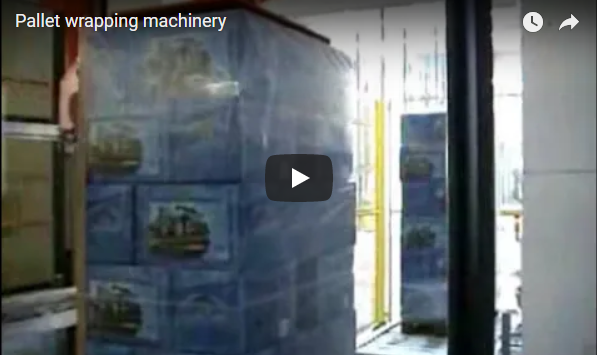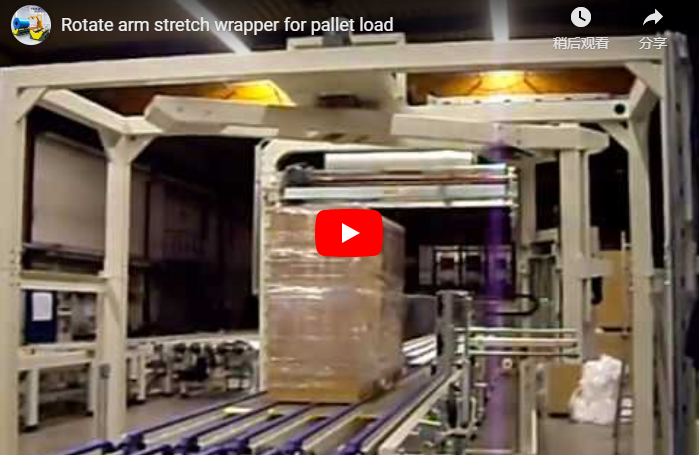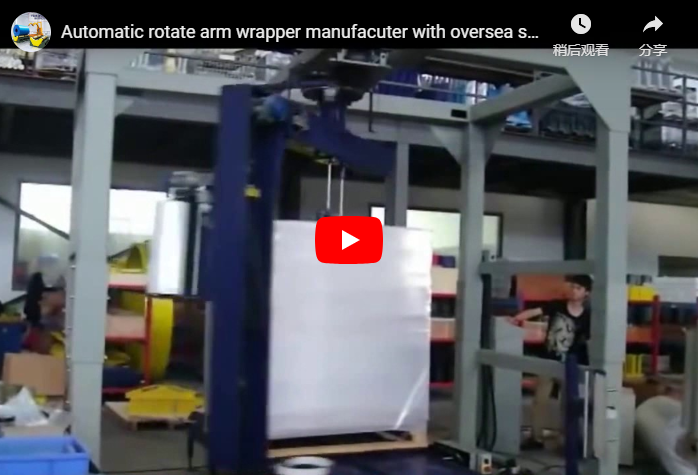Mastering Load Containment: A Deep Dive into the Rotary Arm Stretch Wrapping Machine
In the fast-paced worlds of manufacturing, distribution, and logistics, ensuring palletized goods arrive safely and securely is paramount. The Rotary Arm Stretch Wrapping Machine, often simply called a pallet wrapping machine, stands as a cornerstone technology for achieving reliable load containment. Unlike traditional turntable wrappers where the pallet spins, this machine keeps the pallet stationary while a rotating arm circles it, applying stretch film. This design is particularly advantageous for heavy, tall, unstable, or light loads that might shift or collapse if rotated at speed. Let's explore the capabilities, applications, and operational insights of this essential piece of industrial packaging equipment.
1. Understanding the Mechanics: How Rotary Arm Wrappers Excel
The core principle is straightforward yet highly effective:
- Stationary Load: The pallet remains fixed on the floor or conveyor during the wrapping cycle. This is the key differentiator from turntable models.
- Rotating Arm: An articulated arm, equipped with the film carriage system, orbits the pallet.
- Film Application: As the arm rotates, it dispenses stretch film, typically moving vertically to cover the entire height of the load according to pre-programmed patterns.
This approach provides superior stability, making rotary arm stretch wrappers the preferred choice for industries dealing with challenging load profiles, such as beverages, bagged goods, construction materials, or delicate assembled products.
2. Key Technical Specifications and Features (Illustrative Example)
Understanding the specifications helps in selecting the right machine for your application. The parameters below offer a typical profile, but please note they may not perfectly match the equipment shown in the video. Always contact us for exact machine specifications.
- Machine Type: Rotary Arm Stretch Wrapper
- Operation Mode: Fully Automatic with manual override capabilities
- Year of Manufacture: 2023 (example model year)
- Maximum Load Capacity: 2000 kg (Suitable for substantial loads)
- Maximum Pallet Size: 1200mm x 1200mm (Standard pallet compatibility)
- Adjustable Wrap Height: Up to 2400mm (Accommodates tall loads)
- Film Delivery System: Pre-stretch capable up to 300% (Crucial for film economy and load holding force – stretching 1 meter of film to 4 meters)
- Rotation Speed: Adjustable, up to 40 RPM (Balances throughput speed with load stability)
- Control Panel: Touchscreen Interface (HMI) (For intuitive operation, parameter adjustments, and diagnostics)
- Film Thickness Compatibility: 17-35 microns (Versatility in film selection)
- Power Requirements: 220V/50Hz (Confirm specific voltage/phase needs)
- Machine Weight: Approximately 1600kg (Indicates robust construction)
- Construction Material: Industrial-grade steel (Ensures durability in demanding environments)
- Safety Features: Emergency stop buttons, safety fencing (often included or required), power failure recovery mode
- Efficiency: Capable of wrapping up to 40 pallets per hour (Dependent on load size and wrap pattern)
- Standards Compliance: CE, ISO 9001 Certified (Assurance of quality and safety standards)
- Warranty: 3 years parts and labor (Manufacturer-specific, example shown)
3. The Operator's Perspective: Day-to-Day Use and Experience
From the shop floor, operating a modern rotary arm wrapper is generally straightforward, thanks to intuitive controls.
- Ease of Use: Touchscreen HMIs allow operators to easily select pre-programmed wrap recipes or adjust parameters like wrap counts, tension, and arm speed. Onboarding new users is typically quick.
- Film Loading: Changing film rolls is a routine task. Modern carriages often feature ergonomic designs like "easy thread" or drop-in cradles to simplify this process.
- Common Tasks: Daily checks might include ensuring sensor cleanliness (critical for wrap height detection), verifying film carriage rollers are free of debris, and monitoring film tension.
- Troubleshooting: Film breaks are the most common issue. This can often be traced to incorrect tension settings, nicks in the film roll, or sharp corners on the load snagging the film. Proper setup and quality film minimize this. Addressing alerts on the HMI usually involves checking specific sensors or safety interlocks.
- Maintenance: Routine preventative maintenance often involves lubricating moving parts (like the arm's slewing ring), checking chain/belt tensions, and ensuring electrical connections are secure. Following the manufacturer's PM schedule is key to longevity and reliable performance.
4. Core Applications and Industry Impact
The versatility of the rotary arm pallet wrapper makes it indispensable across various sectors:
- High-Volume Distribution Centers: Essential for preparing diverse pallet loads for shipment. Consistent wrapping ensures load integrity during transit, reduces damage claims, optimizes truck space, and supports automated warehouse workflows (e.g., integration with AGVs or conveyor systems).
- Manufacturing Facilities: Protects finished goods (like appliances, furniture, food & beverage cases) from contamination and shifting during storage and transport. Also crucial for securing inbound pallets of raw materials or components, ensuring they reach the production line intact. Industries handling heavy items like building materials heavily rely on the stability offered by rotary arms.
- Retail and E-commerce Fulfillment: Ensures palletized goods moving from distribution centers to retail stores or directly to fulfillment hubs are secure. This minimizes product damage write-offs and enhances handling safety for staff during unloading and putaway, especially crucial during peak seasons.
5. Optimizing Performance: Getting the Most Out of Your Wrapper
Achieving peak efficiency and load security involves more than just owning the machine:
- Film Selection: Using the right type and gauge of stretch film for the load characteristics is critical. High-performance films combined with effective pre-stretch maximize holding force while minimizing material cost.
- Pre-stretch Settings: Dialing in the correct pre-stretch percentage (often between 150% and 300%) is vital. Too little wastes film; too much can damage lighter products or cause film breaks.
- Wrap Patterns: Utilizing features like top/bottom wrap counts, banding, and reinforcing wraps ensures the load is secured where it's needed most. Modern PLCs allow for complex, customized patterns.
- Integration: For higher throughput, integrating the wrapper with powered infeed and outfeed conveyors, potentially linked to upstream palletizers and downstream labeling or strapping systems, creates a fully automated end-of-line packaging solution.
6. Choosing the Right Rotary Arm Wrapper
Consider these factors when selecting a machine:
- Load Characteristics: Weight, dimensions (L x W x H), stability.
- Throughput Needs: Required pallets per hour.
- Automation Level: Standalone machine vs. fully integrated into an automated line.
- Environment: Washdown requirements (food/pharma), cold storage, etc.
- Budget: Initial investment vs. long-term operational savings (film usage, labor).

Conclusion: An Investment in Efficiency and Protection
The Rotate Arm Stretch Wrapping Machine is far more than just a pallet wrapper; it's a critical component for protecting products, improving logistical efficiency, enhancing workplace safety, and ultimately, safeguarding your bottom line. By understanding its mechanics, leveraging its features, and applying best practices in operation and maintenance, businesses can ensure their goods are perfectly prepared for the journey ahead.
For specific inquiries or to discuss how a rotary arm wrapper can meet your unique packaging challenges, please contact us:
info@fhopepack.com



